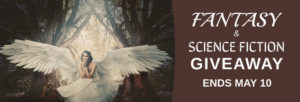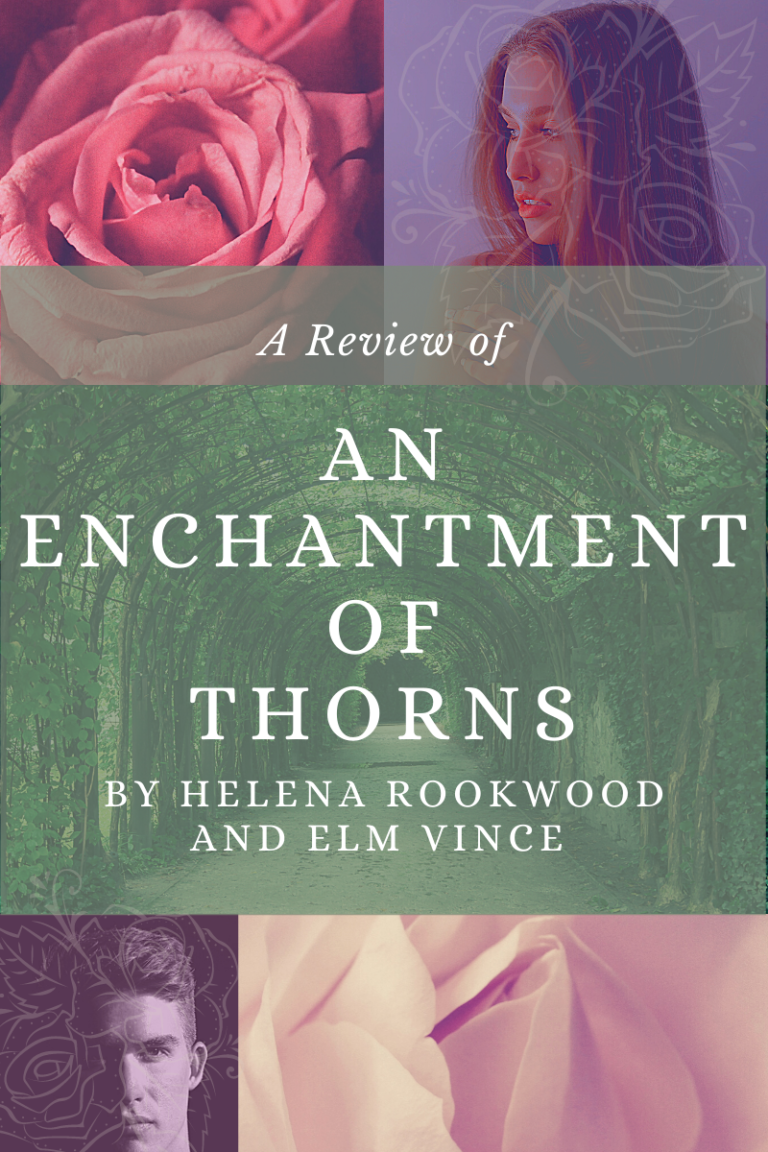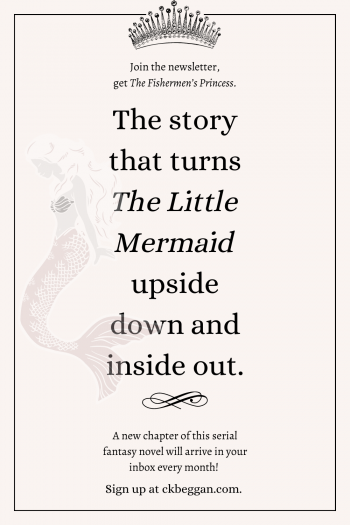Today, I get to bring you all something special: an interview with An Enchantment of Thorns co-authors Helena Rookwood (The Thief and the Throne) and Elm Vince (Tapestry of Night).
This interview was conducted via email with the Scotland-based authors. True to form, they’ve even written many of their answers together!
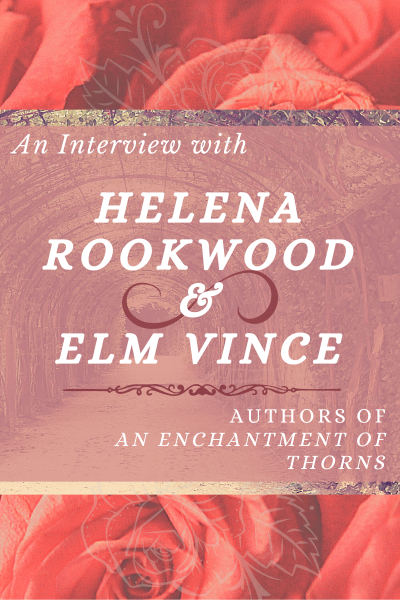
First of all, congratulations on your new series! How does it feel to be writing together again?
Helena Rookwood and Elm Vince: It feels GREAT. We had such a fun time writing Desert Nights, and working together on a new project has been a dream. We haven’t been able to see each other as much as we usually would with the pandemic, so having this joint project has been a nice excuse for (almost daily) regular catch-ups online!
You’re both long-time friends who ended up as writers. How long have you known each other?
Helena & Elm: Too long *cackles.*
Literally our whole lives—we have photos of us as babies together. Our families are friends and we went to school together, then we ended up both moving to Scotland around the same time.
We’ve always had the same reading tastes, and have run a few creative projects together in the past, so moving onto writing together seemed like the natural next step!
Your first collaboration was the Desert Nights series, a retelling of Arabian Nights. Did both of you want to tackle Beauty and the Beast next, or were there other contenders?
Helena & Elm: We’d spoken about a Beauty and the Beast retelling before we’d even finished Desert Nights. We plan to cover other fairy tales in this new series, but we already had the kernel of an idea for a Beauty and the Beast retelling—and it’s one of the most popular fairy tales for a reason!
So what convinced you individually that Beauty and the Beast was the right story to work on together?
Helena: Aladdin was always Elm’s favorite fairy tale and Beauty and the Beast is mine, so I was really excited to move onto this one next. I’ve been wanting to write a Beauty and the Beast retelling for a really long time, and it’s a fairy tale I can’t read enough versions of, so I’ve loved working on this one.
Elm: When I think of these two fairy tales, I can’t help but think of the Disney movies, which were such a huge part of my childhood. Aladdin was my favorite, with Beauty and the Beast a close second. I was always drawn to the dark-haired, strong-willed princesses!
Right from the beginning of chapter one, Rosehill and the Folkwood felt fully fleshed out, and the Cursed Court was its own unique world. How did you develop these settings as a team?
Helena & Elm: The setting was the thing we’d discussed before we’d finished writing Desert Nights—we both had this really clear picture of an enchanted forest and a woodland court. Luckily, we’re usually on the same page with these things because we tend to read the same books!
At the start of a new series, the worldbuilding happens quite organically with us having open-ended conversations, “What if…” or “How about this…”, with one of us (Helena) scribing, until we land on something we’re both excited about writing.
Partway through plotting An Enchantment of Thorns we did have a sudden panic that maybe we were picturing something quite different, so independently drew out how we imagined the Folkwood and the Cursed Court to double-check. We had almost identical drawings!
In the best-known versions of Beauty and the Beast, Belle starts out as a kind and dutiful daughter and not much more. But Aster, her counterpart in An Enchantment of Thorns, has a life of her own, from an ex-lover to a full-time job. How important was it to give Aster her own life and profession?
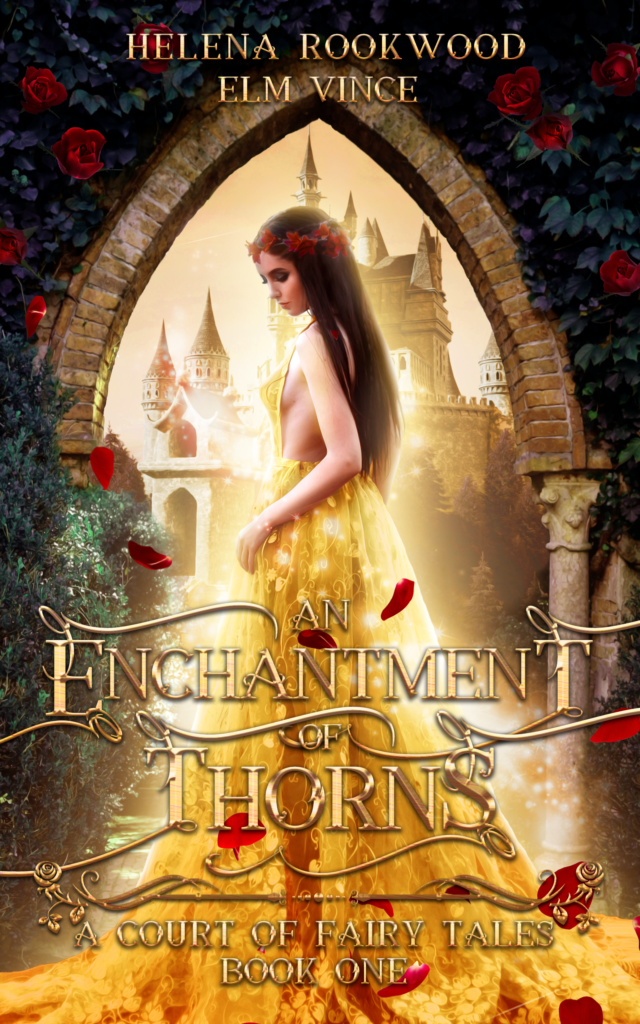
Helena & Elm: Part of what draws both of us to the Beauty character is that she’s a dreamer; in the original fairy tale, when her father promises to bring her and her sisters gifts, her sisters ask for dresses and jewelry while Beauty asks for a single rose. In that version, and a lot of the retellings, she’s also often quite an alternative character—she doesn’t always fit in—and that was something that appealed to us both, too.
In terms of how we made the character our own, the books we love to read are those with strong female leads. We also knew we wanted to make something more of the roses, which is how Aster ended up as a greenwitch. We wanted her to be kind like the Beauty in the original tale, but also talented and driven, so she could hold her own in a world ruled by fae.
Thorne is a really interesting Beast. I loved that he was humane and fair, yet you weren’t afraid to have him outright annoy Aster and have his bad moods, too. What are your favorite things about Thorne?
Helena & Elm: Thorne has a lot to learn from Aster. When we meet him, he’s kind of given up hope that the curse will ever be broken, but he hides that with this detached, often insolent, persona. The more you find out about his backstory, the more you realize there’s a lot of depth to him and why he acts the way he does.
He’s spent a lot of time wallowing in self-hatred, but Aster brings him back to himself. We like how they challenge each other, but in a good way.
As you were developing An Enchantment of Thorns, did Thorne always walk the line between dangerous and misjudged, or did he skew more in one direction more than the other?
Helena & Elm: We actually had quite a tough time with Thorne, exactly for the reason you stated. We knew we wanted to make sure he was really fae—and for that to mean he would act in a way that wasn’t always human, not just for him to be really powerful or beautiful—but we also wanted to make sure he wasn’t totally unlikeable.
In the beginning, he probably skewed too far in the direction of being dangerous, so we ended up adding in sections to make his character feel a bit warmer during the editing process.
Helena, you’re two books in to the Carnival of Fae series (The Prince and the Poisoner and The Thief and the Throne), and Elm, you have the Star Cast series (Tapestry of Night), which provides another take on the fae. So clearly you’re both drawn to stories involving fae! What is it about fae that inspires you both?
Elm: I think for me, it’s the creative range. You can have these monstrous kinds of creepy folk that you see in, say, Holly Black’s writing, or the beautiful, almost elf-like High Fae in Sarah J Maas’s worlds. We wanted to include both in our world and explore different types of faeries.
Helena: I love anything involving fairy tales and folklore, so fae books are a natural way for me to explore those interests in my writing. Weaving mythology and plant lore into my books are two of the things I enjoy most, and I find them a big source of inspiration.
The Carnival of Fae and Star Cast series each point to future encounters with fae characters, but haven’t introduced any yet. They share a concept of fae being separated from humans. But in An Enchantment of Thorns, Aster and Laurel have direct encounters with fae from the beginning. How different was it to write a story where fae and humans are neighbors?
In both of our previous series, those worlds had been shaped by past interactions with the fae. That made our world in An Enchantment of Thorns very different to write as we were setting up the fae world and the human world at the same time, so had to give both equal weight!
Both of us enjoyed writing a world where the fae were present from the outset—so you might see more of that from us both in the future.
What’s next for each of you?
Helena: As well as continuing to work on the sequels to An Enchantment of Thorns, I’m also currently reworking an old series that will be re-released under the series title Faerie Awakens later this year. It was the first series in the genre I wrote, and I (shamefully) never got around to writing the sixth and final book, so readers have been waiting a long time for me to get back to this one! Having left it for such a long time, I’ve struggled not to see all the things I’d do differently, so it’s turned into a larger rewriting project than I imagined it would be.
Elm: I’m working on Herald of Fire, the second book in my Star Cast series. I’m also excited to continue with the A Court of Fairy Tales series this year. We have two more books planned following Aster, before moving onto other fairy tales featuring her sisters. The second book, A Trial of Thorns, is already written, so readers won’t have to wait too long to continue Aster’s journey with us!
Thank you for joining me today. I’d like to wrap up with a fun question and a bit of a challenge. Please complete the following sentence individually:
And they lived happily ever after…until the next book, where we throw more drama their way!
(I know you said to write this individually, and we did, but we’d basically written the same thing. That’s how in sync we are!)
An Enchantment of Thorns is available for pre-order, and will be released on May 6, 2021 . To read my ARC review, click here.
Helena Rookwood writes romantic fantasy. She is the author of the Carnival of Fae series, the River Witch series, and co-author of the Desert Nights series with Elm Vince. For more on the author, visit helenarookwood.com.
Elm Vince writes YA fantasy. She is the author of the Star Cast series and co-author of the Desert Nights series with Helena Rookwood. For more on the author, visit elmvince.com.
Reviews of Other Books by Helena Rookwood:
Throne of Sand (with Elm Vince)
Reviews of Other Books by Elm Vince:


